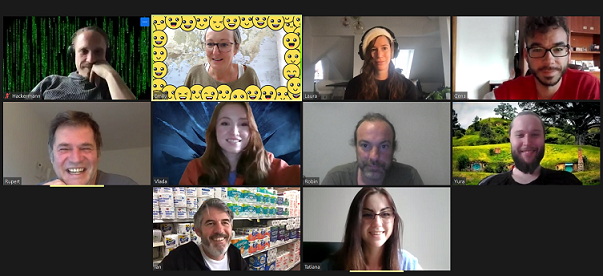Are Prince Charles and Ozzy Osbourne Twins?
Until recent years, marketing relied mainly on demographic data to figure out customers’ motivations. This kind of information is valuable. However, it doesn’t paint the full picture. Demographic data only gives us a partial insight into who our customers are. It does not tell us very much about their personalities or how they think. Here is an example why relying on sociodemographic data alone can be misleading:
Prince Charles and Ozzy Osbourne are what The Zukunftsinstitut in Germany call “Sociodemographic Twins”. Demographically they show great resemblance:
– Year of birth: 1948
– Nationality: Great Britain
– Race: Caucasian
– Gender: Male
– Marital status: Divorced, with children
– Income: High
So that means they could be found socialising at similar events, shopping in the same stores, responding to the same kind of ads, right? Well, it is very unlikely…

Society is Complex, Demographic Data Doesn’t Always Account For This
Our Sociodemographic Twins lead very different lifestyles. Today’s society is so complex and full of choices, that two people who are similar according to sociodemographic data, can still lead extremely different lives.
Here is where Prince Charles and Mr. Osbourne are profoundly different from each other: values and desires, personality traits, beliefs, opinions, interests and habits.
These are the factors that their general behaviour, as well as their consumer behaviour, depend on. That’s why we cannot rely on demographic data alone.
We have to dig deeper.

WUNDER’s Approach to Psychographic Segmentation
What we do at WUNDER is an innovative type of psychographic segmentation, which enables brands to:
Get deeper insight into a single consumer’s mind
Group consumers based on their personalities and lifestyles.
In the centre of our cognification technology lies the ability to find out about consumers’ values.
Values, or emotions, go beyond feelings like happiness or anger. They describe the desires and goals we have. They are what moves us. Ultimately, it’s values that set the course for our individual lives. At WUNDER, we tend to use the words “values” and “emotions” interchangeably. There is a strong connection between the two.
Values are central beliefs expressed through specific behaviors (Rokeach 1973) and emotions are feelings linked to specific behaviors (Gardner 1985). Values, according to Holbrook (1986), involve preference and thus are directly tied to the positive and negative affective opposition of emotions” (source)
Where Are Values Located?
Sometimes we consciously notice emotions (values) in the form of feelings, for instance having fun laughing about a joke or feeling proud of an accomplishment. However, other times we are unaware of our emotions. We are unable to pinpoint what exactly we feel or why. This is the case because values (or emotions) are rooted in our subconscious.
Physically, emotions are produced in the limbic system, which is located in and around the diencephalon, the posterior part of the forebrain. In terms of evolution, this section of the human brain is much older than the neocortex, where our rationality or reason is located.

Decision Making – Should You Book That Last Minute Flight?
In ‘Think Limbic!’ author and psychologist, Hans-Georg Häusel states that humans make decisions primarily based on emotions. For a long time the dominant presumption was that decision making happened in the rational neocortex. Recent brain research shines a new light on this topic. For instance, Antonio Damasio found out that a physically damaged limbic system even renders decision making impossible.
In his best-selling book, ‘Thinking Fast and Slow’, Daniel Kahneman establishes the thesis that fast decisions are generally made with a low degree of rationality. This is the reason why impulse buying happens.
Let’s think about a scenario in which you try to rationally debate an impulse decision. It might be that you are thinking about whether or not to book a last minute city break. Reason tells you that you have no idea what to expect. Booking a flight last minute only gives you a few days to pack your bags and plan your itinerary. Things mightn’t go to plan and you are taking a risk of ruining your precious free-time. And besides, staying at home is the safer option and will save you money.
With all that considered – would you end up hitting the ‘book’ button anyway? If you do, it’s because the trip strongly corresponds to your values of curiosity, spontaneity and adventure. Our emotions shape every decision we make.
Why It’s Important to Understand Customer Emotions

Every person has a different set of values or emotions they want to fulfil. Your neighbour’s idea of a great holiday may be a very organised week in the same resort that they have been visiting every year for the past decade. Their values would be on the opposite end, revolving around security, stability and reliability.
If we look back to our example of Sociodemographic Twins, we can determine that the reason behind their difference lies in their very different sets of values. Prince Charles most likely grew up with a certain value for tradition passed down to him, and is still keen on acquiring knowledge. Ozzy Osbourne, on the other hand, is known for excess, extravagance and a rebellious lifestyle.
Naturally the human mind is complex and therefore people are capable of having several different values they are oriented towards. Nevertheless, there is an internal ranking list of what’s most important to a person.
Values develop from our early childhood on, when our parents give us first insights into the rules of life. Is sharing important? Are we being encouraged to be curious? Do we keep customs alive? Is it accepted to contradict our parents? Are creative endeavours met with praise or criticism? The foundation is laid down during childhood, which is the most crucial part, even if later events can influence our values.
Benefits of Looking Beyond Demographic Data Alone
A deeper understanding of clients’ values helps companies to understand and influence consumers’ decisions. Consumers are more inclined to buy products whenever the item, store or add corresponds to their values. This knowledge can leave companies one step ahead of the competition. As a marketer this means:
-
-
-
-
-
-
-
-
-
-
-
-
-
-
-
-
-
-
-
- Increased perception and acceptance of the brand.
- More efficient marketing strategies.
- Clearer ideas for the development of new fitting products.
- Delivering value in a more meaningful, personalised way.
-
-
-
-
-
-
-
-
-
-
-
-
-
-
-
-
-
-
And as for the question of ‘Are Prince Charles and Ozzy Osbourne Twins?’.
Well, from a sociodemographic perspective, they just might be.
Photo by MM Tey on Unsplash
Photo by Dynamic Wang on Unsplash
Photo by Cosmin Serban on Unsplash


